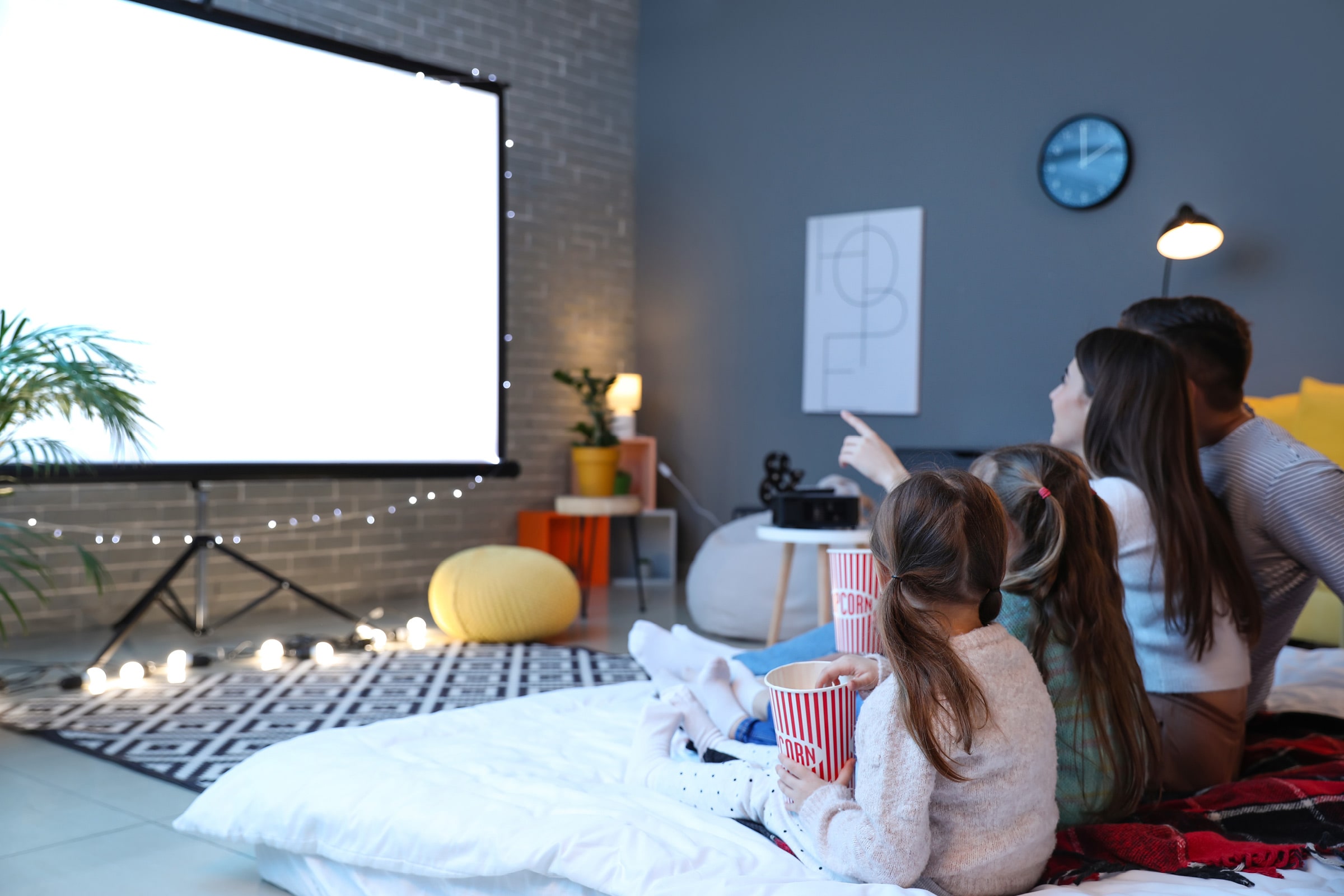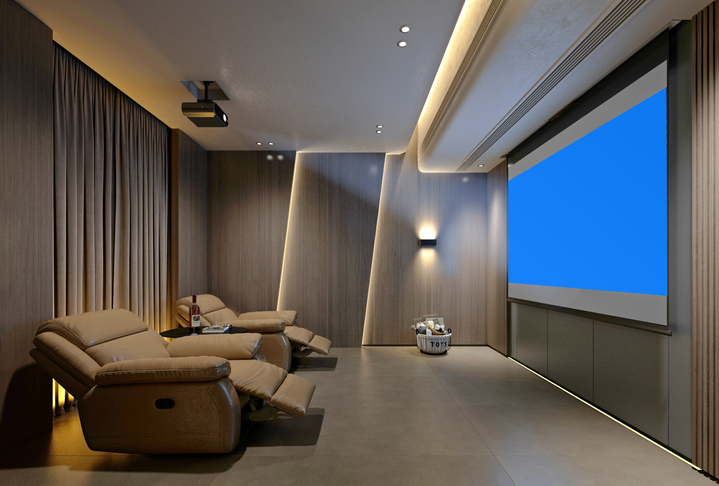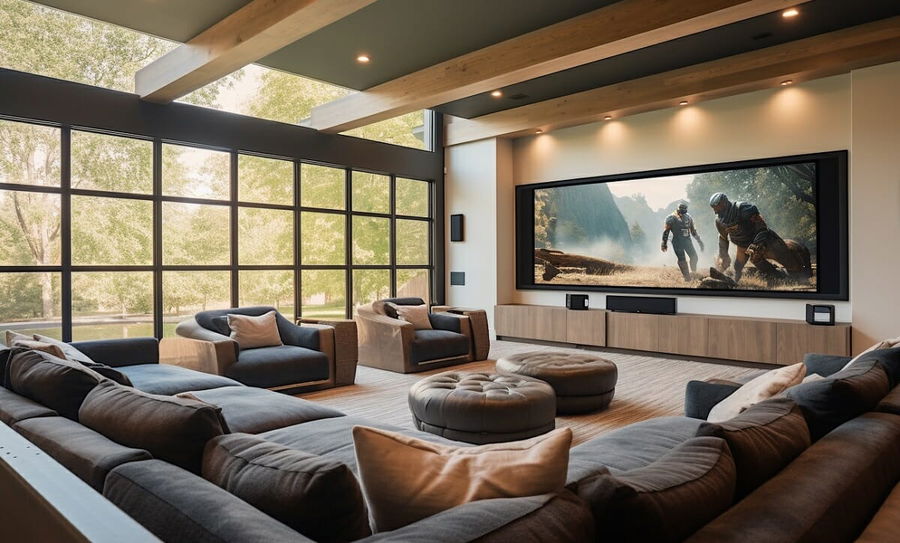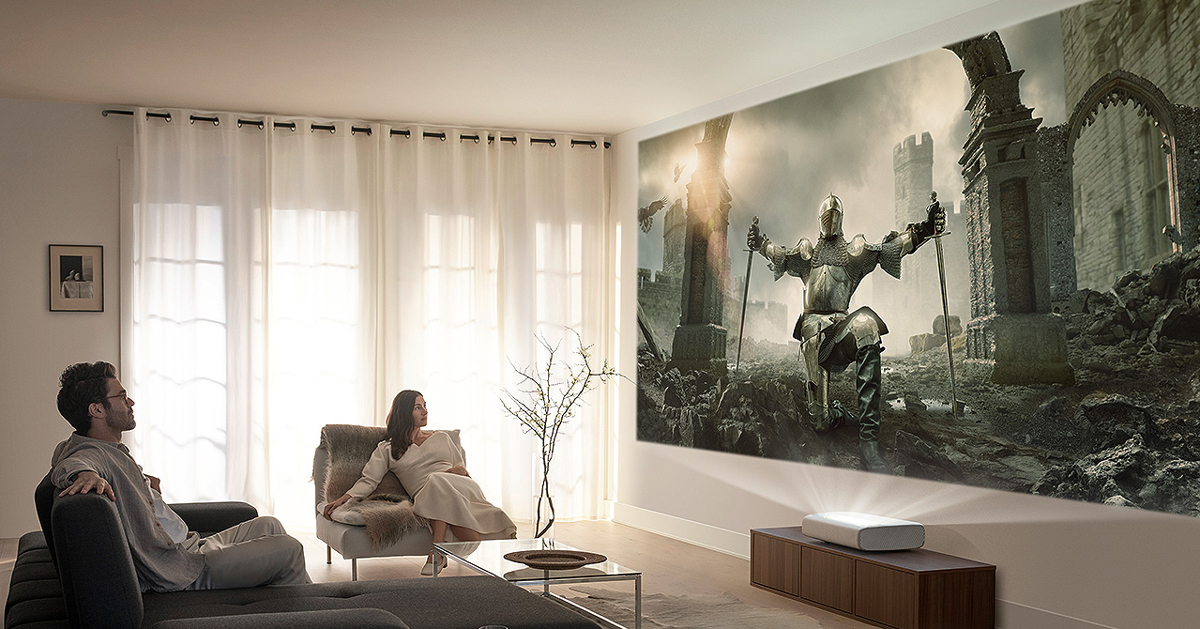Home Theater 101: Whatever You Need to Know for a Motion Picture Experience in your home
Creating a home movie theater that measures up to the cinematic experience of a commercial theater involves mindful consideration of numerous components, including display choice, audio systems, and room layout. Whether you are contemplating the suitable display dimension or the ins and outs of border noise, understanding these basics is necessary.
Picking the Right Screen
When establishing up a home cinema, selecting the best display can make or damage the viewing experience - home theater installation tampa. The screen acts as the centerpiece of your configuration, influencing image top quality, seeing angles, and total visual. Secret variables to consider include screen dimension, type, and resolution
Initially, establish the ideal screen dimension based upon your space dimensions and seating range. A basic guideline is to rest about 1.5 to 2.5 times the angled display dimension for optimal viewing. Next off, choose in between different display types, such as fixed-frame, motorized, or retracting displays, each offering distinct benefits. Fixed-frame screens normally supply the most effective image top quality, while motorized choices enable adaptability precede usage.
Resolution is another essential variable. For an absolutely immersive experience, think about a screen developed for 4K or perhaps 8K material, ensuring sharpness and quality. Furthermore, consider the display's gain, which impacts illumination and comparison; a greater gain can boost illumination in well-lit rooms, while a lower gain might be better for darker environments.
Selecting Sound Equipment
Audio equipment is a crucial component of any type of home movie theater system, considerably boosting the general viewing experience. The choice of audio equipment can determine the deepness, clearness, and immersion of audio, critical for producing a motion picture environment.
When choosing audio tools, think about a border audio system, which normally includes a receiver, several audio speakers, and a speaker. A 5.1 or 7.1 network system is advised, where the first number represents the audio speakers and the second the subwoofer, providing an immersive soundscape. The receiver is the heart of the system, managing audio and video clip signals, and ought to support modern styles like Dolby Atmos for an improved spatial experience.
Quality audio speakers are necessary; seek designs that supply a well balanced noise profile with good bass action. Floor-standing speakers can produce richer audio, while shelf options conserve area. Additionally, take into consideration cordless choices for simplicity of installation, although wired systems commonly supply premium efficiency.

Optimum Seating Plans
Creating an optimal home theater experience pivots dramatically on optimum seating setups. The arrangement of seats plays a critical role in both convenience and seeing high quality, straight affecting the general motion picture experience.
First, consider the display dimension and checking out range. A common guideline is to position seats at a range approximately 1.5 to 2.5 times the diagonal dimension of the screen. This ensures an immersive experience without stressing the eyes.
Following, altitude is vital. The back rows must find here be higher than the front to prevent obstructions if your seats is in a tiered format. For level seats, guarantee that the front row is not as well near to the display, which everybody has a clear line of vision.
Additionally, consider the plan in terms of social dynamics. Group seats can boost the public experience, while specific seats may be liked for individual viewing.

Lastly, prioritize comfort with ergonomic seating that sustains extensive watching periods. Including recliner chairs or cushioned seats can dramatically enhance the experience, making the home theater a preferred location for both home entertainment and relaxation.
Lighting and Setting
Efficient illumination and atmosphere are essential components of a well-designed home movie theater, as they substantially influence the checking out experience. The appropriate illumination can boost the motion picture feel, while inadequate selections can diminish it. For optimum outcomes, take into consideration a split illumination approach that includes ambient, task, and accent illumination.
Ambient lights provides basic illumination, making certain that the space is not entirely dark, which can strain the eyes. Dimmer buttons are very suggested, enabling for modifications based upon the material being checked out. Job lighting, such as wall surface sconces or flooring lights, supplies functional illumination for activities like analysis or navigating the area without interfering with the overall environment.
Accent illumination can be utilized to highlight architectural functions or check here produce prime focus, including deepness and passion to the room. LED strip lights behind screens or along shelves can give a refined glow that improves the aesthetic experience without overwhelming the visitor.

Wiring and Installation Tips
A well-planned circuitry configuration is critical for accomplishing optimal efficiency in your house cinema system. Appropriate electrical wiring not just guarantees top notch sound and video visit this page signals however likewise enhances the general aesthetic of your room. Begin by mapping out your design, determining where each component will certainly be positioned, including your display, audio speakers, and receiver.
When choosing cords, focus on high-grade, properly gauged electrical wiring to minimize signal loss. HDMI cables must be utilized for video links, while speaker wire should match the specifications of your speakers and amplifier. Choose in-wall rated cable televisions to adhere to security standards and keep a tidy appearance.

Verdict
In summary, developing a phenomenal home cinema experience requires cautious factor to consider of various aspects, consisting of screen choice, audio equipment, seating arrangements, lights, and wiring. Each element plays a vital role in achieving optimal performance and atmosphere, ultimately improving the pleasure of home amusement. By focusing on these factors, a motion picture ambience can be successfully replicated, enabling immersive checking out experiences that match typical theater settings. Attention to information in each location is important for general satisfaction.
Creating a home movie theater that measures up to the cinematic experience of a commercial theatre entails careful factor to consider of multiple components, including display option, audio systems, and space layout.When setting up a home cinema, picking the appropriate display can make or damage the checking out experience. Next off, select between different display types, such as fixed-frame, mechanized, or retractable displays, each offering unique advantages. For a truly immersive experience, take into consideration a display created for 4K or even 8K material, making certain intensity and clearness.In recap, creating an exceptional home theater experience calls for mindful consideration of numerous aspects, consisting of screen option, audio devices, seating arrangements, lighting, and circuitry.